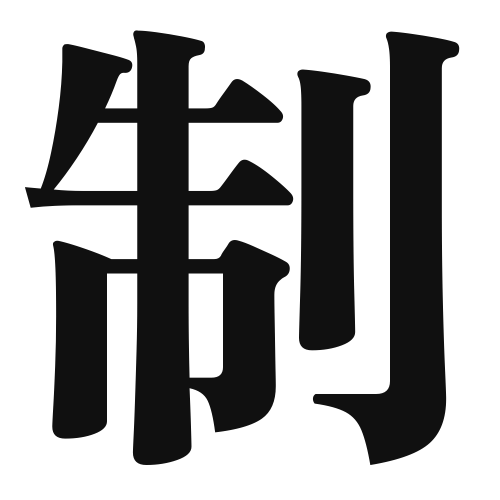1. Overview of Meaning
The kanji “制” (sei) generally means “to control,” “to restrict,” or “to regulate.” It conveys the idea of imposing limits or rules on something.
2. Formation and Radical
Formation of the Kanji: The kanji “制” is a compound character, which means it is formed by combining different elements. It is classified as a 形声文字 (phono-semantic compound), where the left part “制” (to govern) provides the meaning, and the right part “刀” (sword) suggests a phonetic element.
Radical: The radical of “制” is “刀” (katana), which relates to cutting or action, symbolizing the idea of imposing control or limits.
3. Examples of Usage
Common Words and Phrases: Some frequently used words that include “制” are:
- 制限 (せいげん, seigen) – restriction, limit
- 制度 (せいど, seido) – system, institution
- 制御 (せいぎょ, seigyo) – control, regulation
Example Sentences in Daily Conversation:
- この法律は交通制限を設けています。 (This law imposes traffic restrictions.)
- 新しい制度が導入されました。 (A new system has been introduced.)
4. Synonyms and Antonyms
Similar Kanji: A similar kanji is “統” (とう, tou), which means “to unify” or “to govern.” While both kanji relate to control, “制” emphasizes restriction, whereas “統” focuses on bringing things together under one authority.
Opposite Kanji: An antonym of “制” is “自由” (じゆう, jiyuu), which means “freedom.” This represents the absence of control or restrictions.
5. Cultural and Historical Background
Relation to Japanese Culture: The concept of “制” is significant in Japanese culture, particularly in governance and social order. It reflects the importance of rules and regulations in maintaining harmony within society.
Proverbs and Idioms: One common saying is “制する者は勝つ” (せいするものはかつ, seisuru mono wa katsu), which translates to “Those who control will win.” This highlights the value placed on control and regulation in achieving success.
